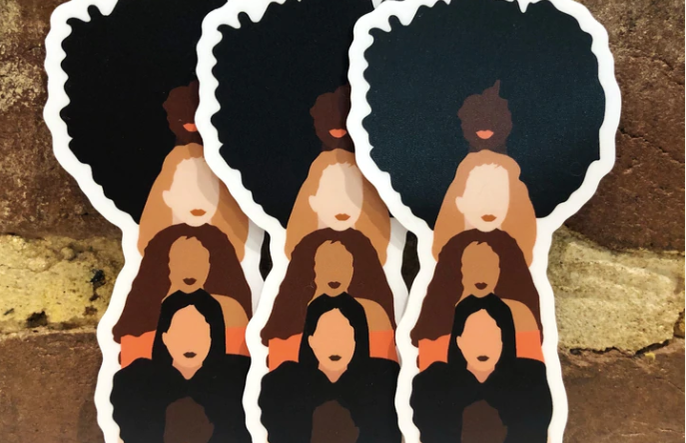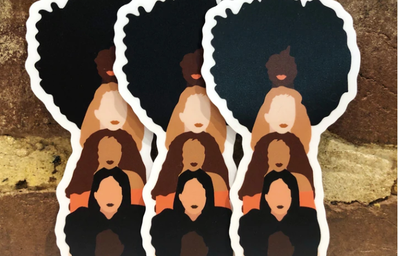Women’s History Month is celebrated throughout March. During this month, there are several incredible women who we hear about consistently. While these women are very important to our history, there are many other women whose stories are forgotten. Here are four powerful and trailblazing women from history that I find worthy of our admiration:
Alison Hargreaves
Alison Hargreaves was a skilled alpinist and mother from Britain. Climbing had been her passion for most of life. Finally, in May 1995, she finally reached her ultimate goal, climbing Mt. Everest. She became the first woman to scale Mt. Everest alone and without bottled oxygen. Climbing the 29,029 feet to the top of Mt. Everest is no easy feat; it took years of preparation, bouts of passion, and involved numerous challenges. Despite these obstacles, she successfully completed the climb and sent a radio message to her husband and kids saying “I am on the highest point of the world, and I love you dearly.”
Unfortunately, just three months later, Hargreaves died while climbing K2 (the second highest peak in the world). She and her fellow climbers had made it to the summit when a severe storm hit, taking all of their lives.
Despite her tragic passing and much too short life, she has served as an inspiration to millions. Her success and hard work serves as an example to always follow your dreams. To this day, she is a role model to alpinists, athletes, and women everywhere.
You can learn more about Alison Hargreaves here
Mary Allen Wilkes
Prior to recent years, women working in STEM were a rarity. However, there are many women who made significant contributions to the technological and scientific fields that have been overshadowed by the men in the field. One woman who made substantial contributions was Mary Allen Wilkes. Wilkes was born in 1937, during her childhood and adolescence, computers barely existed. As a young woman, she had planned on studying the law and to become a lawyer. However, this career goal was out of her reach. She became interested in learning more about computers and recognized it as a growing field. This curiosity led her to MIT where she was hired as a computer programmer.
She quickly became a skilled programmer and was assigned to many important projects, namely, the LINC project. This project worked towards designing one of the first handheld computers, which was a huge milestone in the technological world. Wilkes spent several years working on this project and spending countless hours programming. Eventually, their efforts paid off and their project was successful. The LINC project and Wilkes became pioneers for the computer and technological industry.
While their project was ultimately successful, Wilkes had faced many challenges and hardships in her career. She had many codes and programs that fail, and spent many tireless hours working on the programming. However, she never gave up, and without all of her hard work, we may not have the laptops and personal computers like we do today. Wilkes is still alive today and continues to be considered a tech pioneer.
You can read Wilkes’ full story here.
Jane Addams
Jane Addams was a powerful and dedicated activist who worked in the late 19th and early 20th century to fight for human rights. Addams was a college-educated and independent woman, which was uncommon during this time period. After college, she wanted to use her education to serve the greater good and help the people in her city of Chicago. During a trip to London, she learned about settlement houses that aimed to help the working class and less fortunate. Addams was greatly inspired by this idea and quickly opened the Hull House in Chicago. The Hull House provided many services to over a thousand people each week, these services included: English classes, cooking classes, immigration support, daycare for working mothers, job placement services, and more. She expanded her efforts by writing articles and giving speeches around the country. Her popularity grew and she became an advocate and lobbyist for many other important issues, namely, child labor laws.
She continued this work for years. When World War I began, her passions began to shift, and she quickly became an advocate for international peace. She, and many other women, traveled the globe to spread peace. She eventually founded the Women’s International League for Peace and Freedom in 1919. Then, years later, in 1931, she became the first American woman to receive the Nobel Peace Prize for her work in promoting peace.
Addams was a strong and passionate advocate of many important issues. Her story can teach women all around the world to fight for human rights and for peace.
Addams’ full story is outlined here.
Patsy Mink
For decades, the United States government has been full of white men. While they were elected to represent their communities, many different groups of people were not well represented. Patsy Mink changed this for the Hawaiian people.
Ever since Mink was young, she was interested in government and was a dedicated student. During college, she faced a lot of discrimination and racism. However, Mink didn’t give up her dreams and continued with her education. Eventually, Mink went to the University of Chicago Law School where she met her husband and became a lawyer. A few years after getting married, they decided to move back to Hawaii. Unfortunately, life didn’t get easier for her back home. She, once again, faced discrimination and racism. Due to her interracial marriage, it was difficult to find a job. However, Mink remained resilient and continued to pursue her dreams.
In 1959, Hawaii became a US state. Mink immediately decided to run for congress, but she was unsuccessful and did not receive the democratic nomination.In 1964, another congress seat opened up and she ran again. This election, she won and became the first woman of color and the first Asian-American to serve as a member of congress. In total, Mink served 12 terms in congress for a total of 24 years. During her time in congress, she fought for many important causes. She was author and sponsor of the Title IX law that outlawed discrimination on the basis of sex. She was a distinguished and dedicated member of congress who served her constituents well.
Mink’s election and time in office was a huge milestone for people everywhere. Even after her death in 2002, she continues to be a role model for women everywhere and reminds people to never give up.
Here is more information about Mink and the work she did.
This March, I encourage you to look into the stories of women that you haven’t heard of before. There are millions of powerful women throughout history, famous or not, they have pathed the way for women today. Hope this March, we can all focus on elevating women’s voices and stories.


